Exploring Daqing Oilfield History Museum: The Heart of China’s Oil Industry
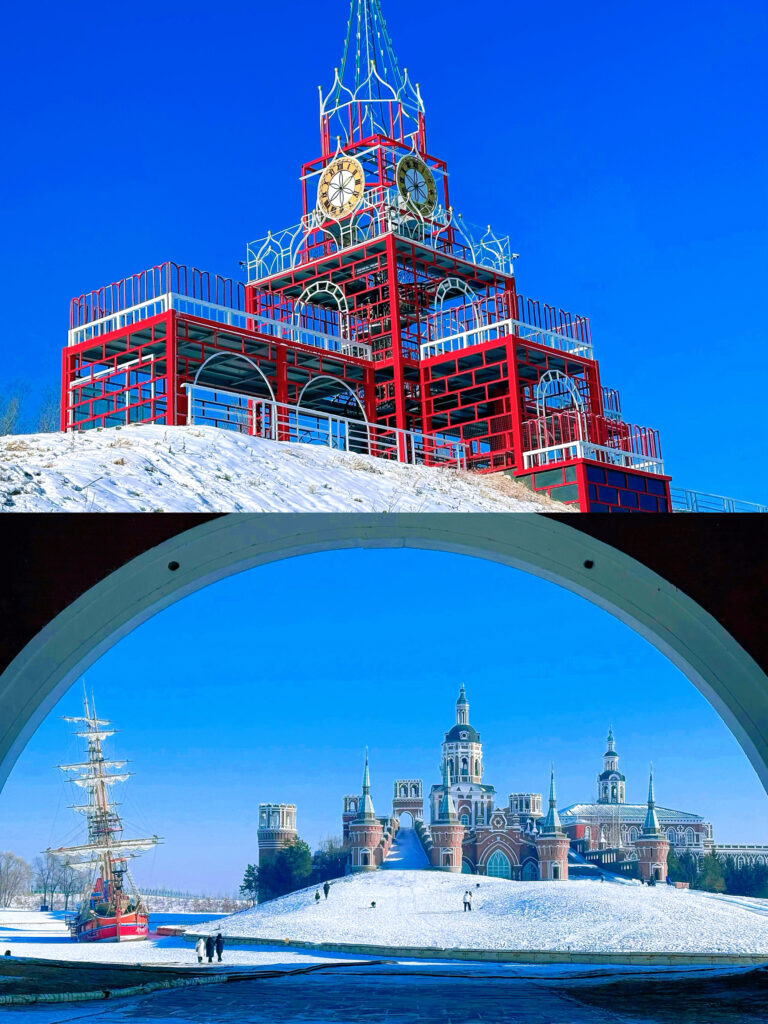
An Essential Guide to Visiting Daqing_Oilfield_History_Museum
Nestled in the heart of Heilongjiang Province, the Daqing Oilfield History Museum stands as a testament to China’s rich petroleum heritage and the indomitable spirit of its workers. This unique museum offers visitors an engaging glimpse into the evolution of the oil industry in Daqing, a city that has transformed from a modest town into a bustling hub of oil production since the discovery of oil in the 1950s.
As you wander through the museum’s thoughtfully curated exhibits, you’ll uncover the fascinating stories of the “Iron Man” Wang Jinxi and his contemporaries, whose unyielding dedication and innovative techniques laid the groundwork for Daqing’s oil empire. With free admission and a recommended visit time of just one hour, this museum is an ideal stop for international travelers eager to delve into local history while enjoying a blend of educational displays and inspiring narratives.
Whether you’re an oil industry enthusiast, a history buff, or simply curious about China’s rapid industrialization, the Daqing Oilfield History Museum promises an enlightening experience that captures the essence of a pivotal chapter in modern Chinese history. Enjoy the opportunity to appreciate not just the technological advancements but also the human stories that fuelled this remarkable journey.
In This Guide
- An Essential Guide to Visiting Daqing_Oilfield_History_Museum
- The Rich History and Legends of Daqing_Oilfield_History_Museum
- Main Highlights: What You Absolutely Can’t Miss
- Planning Your Visit: A Practical Guide
- Tickets: Prices, Booking, and Tips
- How to Get There: A Complete Transportation Guide
- Local Cuisine and Accommodation Nearby
- Frequently Asked Questions
- Final Thoughts on Your Trip

Daqing_Oilfield_History_Museum.
The Rich History and Legends of Daqing_Oilfield_History_Museum
Nestled in the heart of Daqing, the Daqing Oilfield History Museum is more than just a repository of artifacts; it is a tribute to the city’s heritage and its remarkable journey in the world of oil production. Opened to the public as a means to commemorate the pioneering efforts of the oil industry in China, the museum stands as a testament to the spirit of innovation and resilience that characterized the oil boom of the mid-20th century.
The story of Daqing Oilfield began in the 1950s when significant oil reserves were discovered in the region. This discovery was pivotal, marking the inception of what would become one of China’s largest and most productive oilfields. The museum encapsulates this transformative era, showcasing the techniques and technologies that were adopted to harness the rich natural resources beneath the surface. Exhibits feature everything from early drilling equipment to modern extraction technologies, allowing visitors to trace the evolution of oil production through the decades.
A significant figure in this narrative is Wang Jinxi, affectionately known as “Iron Man.” As a leader of the oil workers during the early days of the oilfield, Wang’s dedication and hard work became legendary, embodying the ethos of the workers who toiled tirelessly to lay the foundation for China’s oil industry. His story is woven throughout the museum, inspiring visitors with tales of perseverance in the face of challenges.
The museum itself is an architectural marvel, designed to reflect the industrial heritage of Daqing. Visitors can explore various themed exhibitions that not only highlight the technological advancements in oil drilling but also delve into the socio-economic impacts of the oil industry on local communities. Interactive displays and multimedia presentations bring to life the stories of the workers, their families, and the changes that the oil boom brought to everyday life.
Notably, the museum serves a dual purpose; while it educates visitors about the oil industry, it also acts as a cultural hub, fostering a sense of pride among locals. Schools often organize field trips here, allowing young generations to learn about their city’s rich history and the people who shaped it. The narratives presented not only celebrate the achievements of the past but also instill a spirit of innovation and responsibility towards the future.
For international travelers, the Daqing Oilfield History Museum offers a unique insight into a lesser-known aspect of China’s history. It is a place where the past meets the present, and where the tales of struggle and success resonate with the broader human experience. A visit here is not just about understanding oil; it’s about appreciating the tenacity of those who worked to turn dreams into reality in the harsh landscapes of Daqing.

Daqing_Oilfield_History_Museum.
Main Highlights: What You Absolutely Can’t Miss
Visiting the Daqing Oilfield History Museum is a fascinating journey into the heart of China’s oil industry. Here are the main highlights you absolutely cannot miss during your visit:
The Evolution of Oil Extraction
Begin your exploration by immersing yourself in the history of oil extraction, presented through informative exhibits that detail the evolution of techniques and technology. From the initial discovery of oil in the Longjiang region to modern extraction methods, you’ll witness how this vital resource has shaped the local economy and society.
Iconic Artifacts and Exhibits
One of the museum’s standout features is its collection of artifacts. These include vintage drilling equipment, photographs, and documents that tell the stories of the pioneers of the Daqing Oilfield. Don’t miss the impressive models that illustrate the scale and complexity of oil extraction operations, offering a tangible connection to the past.
Interactive Displays
For a more engaging experience, check out the interactive displays scattered throughout the museum. These exhibits allow you to simulate the oil extraction process, giving you a firsthand feel for the challenges faced by workers in the field. It’s an educational experience suitable for visitors of all ages.
The Iron Man Wang Jinxi Memorial
Named after the legendary oil worker who became a symbol of dedication and hard work, this memorial is a poignant tribute to those who contributed to the development of the Daqing Oilfield. The museum honors Wang Jinxi’s legacy and the spirit of the workers, making it a must-see for anyone interested in the human stories behind industrial progress.
Scenic Grounds
After touring the museum, take a leisurely stroll through the surrounding grounds. The area is beautifully maintained, providing a serene backdrop for reflection on the history you’ve just uncovered. It’s a great spot for photos, especially with the museum’s striking architecture in the background.
Free Admission
One of the best parts of visiting the Daqing Oilfield History Museum is that entry is free! This makes it an accessible option for travelers on any budget, allowing you to delve into the rich history without any financial burden.
Nearby Attractions
If time permits, consider exploring nearby attractions such as the Daqing Oil Museum and Daqing Oil Field Park, both of which complement your museum visit and offer further insights into the region’s oil heritage.
In just about an hour, you can gain a deep understanding of not only the oilfield’s history but also its significance in shaping modern China. This museum is a hidden gem for international travelers looking to uncover the lesser-known stories of China’s industrial evolution.
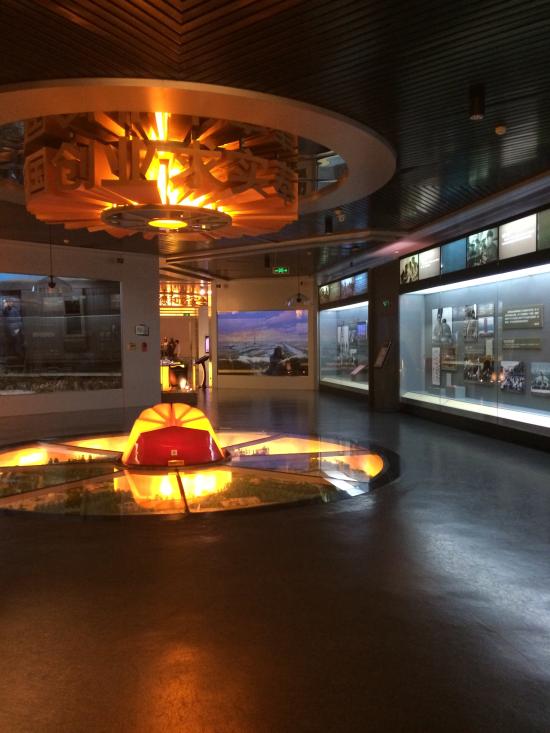
Daqing_Oilfield_History_Museum.
Planning Your Visit: A Practical Guide
Planning Your Visit: A Practical Guide to Daqing Oilfield History Museum
Visiting the Daqing Oilfield History Museum offers a unique glimpse into the rich history of China’s oil industry. This practical guide provides essential information to help you make the most of your trip.
Location and Access
The museum is located at 32 Middle 7th Road, Saertu District, Daqing City, Heilongjiang Province, China. It’s easily accessible by public transport, with several bus lines serving the area. If you’re driving, ample parking is available nearby.
Opening Hours
- Monday to Sunday: 9:00 AM – 4:30 PM
Note: Last admission is at 4:00 PM. The museum is closed on public holidays, so check ahead if you plan to visit during these times.
Admission Fee
Free Entry: One of the standout features of the Daqing Oilfield History Museum is that it offers free admission, making it an excellent choice for budget-conscious travelers.
Recommended Duration
Plan to spend about one hour exploring the museum. This should give you enough time to appreciate the various exhibits and displays that chronicle the history of oil extraction in the region.
What to Expect
The museum features a range of exhibits detailing the evolution of oil drilling techniques and the significance of the Daqing Oilfield in China’s economic development. Visitors can expect to see historical artifacts, photographs, and interactive displays that provide insights into the lives of those who worked in the oil fields.
Nearby Attractions
While in the area, consider visiting other nearby attractions:
- Daqing Oil Museum: Just a short distance away, this museum offers additional insights into the oil industry.
- Daqing Children’s Park: A lovely spot for families with children.
- Jidushi Church: An architectural gem worth a visit.
- Buddha Light and Amitabha Scenic Spot: A serene place for reflection and relaxation.
Tips for Your Visit
- Language: While some exhibits may have English translations, it’s helpful to learn a few basic Mandarin phrases or download a translation app.
- Photography: Be mindful of the museum’s photography policies. Some areas may restrict photo-taking to preserve artifacts.
- Comfortable Footwear: Wear comfortable shoes, as you may be walking around the museum and nearby attractions.
- Timing: Aim to arrive early in the day to avoid crowds, especially on weekends and during Chinese holidays.
Getting There
If you are arriving from Daqing City center, local buses or taxis are readily available. For those flying in, the nearest airport is Daqing Shi Airport (DQA), which is about 30 minutes away by car.
Final Thoughts
The Daqing Oilfield History Museum is not just a tribute to an industry but a reflection of the area’s cultural heritage. By following this guide, you can ensure a meaningful and enjoyable visit. Whether you are an oil industry enthusiast, a history buff, or simply looking for an insightful experience, this museum is well worth a visit. Enjoy your exploration of Daqing’s fascinating oil history!
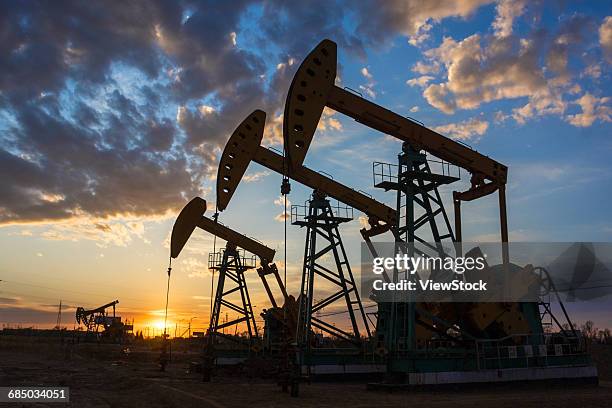
Daqing_Oilfield_History_Museum.
Tickets: Prices, Booking, and Tips
Visiting the Daqing Oilfield History Museum offers a unique glimpse into the rich history and development of one of China’s most significant oil-producing regions. Here’s everything you need to know about tickets, booking, and some helpful tips to enhance your visit.
Ticket Information
Entry to the Daqing Oilfield History Museum is free of charge, making it an accessible destination for all travelers. This allows you to explore the fascinating exhibits showcasing the evolution of oil extraction techniques and the cultural significance of the oilfield without any financial burden.
Opening Hours
The museum typically operates from 8:00 AM to 5:00 PM on weekdays and weekends alike, although it’s advisable to check ahead as hours may vary seasonally or due to special events. Admission ends at 4:30 PM, so plan your visit accordingly to ensure you have enough time to explore.
Booking Tips
- No Pre-booking Required: Since entry is free, you don’t need to book tickets in advance. However, arriving early can help you avoid crowds and enjoy a more leisurely experience.
- Guided Tours: If you prefer a more structured visit, consider joining a guided tour. These can often provide deeper insights into the exhibits and the history of the oilfield.
- Language Considerations: While some information may be available in English, bringing a translation app or guidebook can enhance your understanding of the displays.
Visitor Experience
Most visitors recommend allocating about one hour for the museum, which is typically sufficient to appreciate its main exhibits. The museum is well-maintained, and you may find it less crowded on weekday mornings, allowing for a more intimate experience.
Additional Tips
- Nearby Attractions: After visiting the museum, consider exploring nearby attractions, such as the Daqing Oil Museum and Daqing Oil Field Park, to make the most of your day.
- Transport: Public transportation options are available, but exploring by taxi or rideshare can be more convenient, especially if you’re short on time.
By taking advantage of these tips, you’re sure to have an enriching visit to the Daqing Oilfield History Museum, immersing yourself in the local culture and history of this vital energy hub.
How to Get There: A Complete Transportation Guide
To reach the Daqing Oilfield History Museum, which is a fascinating destination for those interested in the history of oil extraction in China, you have several transportation options available. Here’s a comprehensive guide to help you navigate your way to this unique museum.
Getting to Daqing Oilfield History Museum
By Air
The nearest airport to the museum is Daqing Shi Airport (DQA), located approximately 20 kilometers away from the city center. From the airport, you have a couple of options:
- Taxi: The most convenient way is to take a taxi directly to the museum. The ride should take around 30 minutes, depending on traffic, and will cost approximately 60-80 CNY (around 10-12 USD).
- Airport Shuttle: Some hotels offer shuttle services; check in advance if your accommodation provides this option.
By Train
Daqing is well-connected by rail, making it easy to reach by train from major cities such as Harbin and Qiqihar.
- Train Station: Arrive at Daqing Railway Station, which is about 8 kilometers from the museum.
- Taxi: From the station, taking a taxi is the quickest option, costing around 20-30 CNY (3-5 USD) and taking about 15 minutes.
- Public Transport: Alternatively, you can take a local bus or ride-sharing service to the museum.
By Bus
If you are already in Daqing or nearby cities, you can opt for a bus:
- Local Buses: Several local buses run routes that stop near the Daqing Oilfield History Museum. Bus lines, such as Bus 106, will drop you off at the You Tian Li Shi Guan stop, which is a short walk from the museum entrance.
- Intercity Buses: There are also intercity buses that connect Daqing with surrounding cities, which will arrive at the Daqing Bus Station.
By Car
For those who prefer to drive:
- Car Rentals: Numerous car rental services are available in Daqing. Make sure to have a GPS or a reliable map as the signage may not always be in English.
- Directions: The museum is located at 32 Middle 7th Rd, Saertu Qu, Daqing Shi, Heilongjiang Sheng, China. Use this address in your GPS for accurate navigation.
On Foot
If you’re staying nearby, walking to the museum is also a great option. It’s a pleasant area, and you can enjoy the sights along the way.
General Tips
- Opening Hours: The museum is open from 9:00 AM to 4:30 PM, with the last admission at 4:00 PM. Plan your visit accordingly to make the most of your time.
- Admission Fee: Entry to the museum is free, allowing you to explore the history of the Daqing Oilfield without any cost.
- Language: While some exhibits may have English translations, knowing a few key phrases in Mandarin can enhance your experience.
By considering these transportation options, you can easily make your way to the Daqing Oilfield History Museum and delve into the rich history of oil production in China. Enjoy your visit!
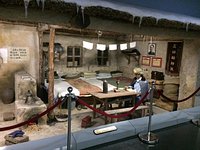
Daqing_Oilfield_History_Museum.
Local Cuisine and Accommodation Nearby
Just a stone’s throw away from the Daqing Oilfield History Museum, visitors will find a delightful array of local dining options that bring the rich flavors of Heilongjiang province to life. For those looking to indulge in authentic Chinese cuisine, YiKou Zhu (located about 2.1 miles away) is a must-visit. This restaurant specializes in Northeastern Chinese dishes, offering a comforting atmosphere and a menu filled with hearty meals that are perfect after a day of exploration.
If seafood is more to your liking, make your way to BaShan ShuShui, approximately 1.2 miles from the museum. Known for its fresh catch and expertly prepared dishes, this eatery promises a memorable dining experience. The local ingredients combined with traditional cooking techniques create a unique culinary adventure.
For something casual, FengBo Zhuang (2.8 miles away) serves a variety of Chinese fare in a relaxed setting. It’s a great spot for travelers seeking quick bites or a laid-back meal.
After enjoying the local cuisine, you’ll want a comfortable place to rest. There are several accommodations nearby, catering to different preferences and budgets. The 7 Days Inn is a popular choice for budget-conscious travelers, offering basic amenities and a convenient location. For a more upscale experience, consider the Daqing Hotel, known for its modern facilities and exceptional service.
For those seeking a more serene atmosphere, the Lianhuan Lake Hot Spring Resort is a fantastic option. Not only does it provide comfortable lodging, but guests can also enjoy the relaxing hot springs after a day of sightseeing.
Whether you’re indulging in local dishes or unwinding in cozy accommodations, the area surrounding the Daqing Oilfield History Museum offers a perfect blend of culture and comfort.
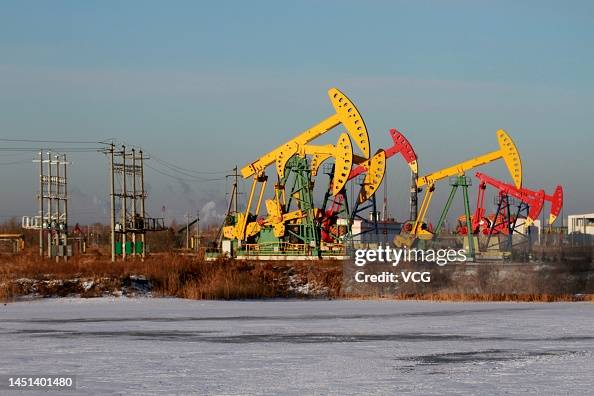
Daqing_Oilfield_History_Museum.
Frequently Asked Questions
-
What are the museum’s opening hours?
The Daqing Oil Field History Museum is open daily from 9:00 AM to 4:30 PM, with the last admission at 4:00 PM. Be sure to check for any holiday closures before your visit. -
Is there an admission fee?
Entry to the museum is free of charge, making it an accessible destination for all visitors. -
How long should I plan to spend at the museum?
A visit to the Daqing Oil Field History Museum typically takes about one hour. This should give you enough time to explore the exhibits and learn about the history of oil extraction in the region. -
Where is the museum located?
The museum is situated at 32 Middle 7th Road, Saertu District, Daqing City, Heilongjiang Province, China. It’s advisable to use a map or GPS for easy navigation. -
Are there any nearby attractions worth visiting?
Yes! Nearby attractions include the Daqing Oil Field Park, Daqing Children’s Park, and the Jidushi Church. These sites offer a nice complement to your museum visit. -
Can I take photographs inside the museum?
Photography policies may vary, so it’s best to check with museum staff upon arrival. Some areas may have restrictions on photography, especially for specific exhibits. -
Is the museum accessible for individuals with mobility issues?
The Daqing Oil Field History Museum aims to be accessible to all visitors. However, it’s recommended to contact the museum in advance to confirm specific accessibility features. -
What is the best way to get to the museum?
Public transport options, such as buses, are available to reach the museum. Alternatively, taxis and ride-sharing services are convenient options if you prefer a more direct route.
Final Thoughts on Your Trip
As you wrap up your visit to the Daqing Oilfield History Museum, take a moment to reflect on the profound stories embedded in its exhibits. This museum is not just a repository of artifacts; it is a testament to human ingenuity and resilience in the face of challenges. From the early days of oil exploration to the modern advancements in extraction technology, the museum offers a unique glimpse into the evolution of one of China’s most significant natural resources.
Engaging with the displays, you may find inspiration in the tales of the pioneers who shaped the oil industry here. Their dedication not only transformed Daqing into a vital energy hub but also enriched the cultural fabric of the region. As you step outside, consider how the knowledge gained within these walls can deepen your understanding of energy’s role in our world today.
Whether you’re a history buff, an energy enthusiast, or simply curious about local culture, the Daqing Oilfield History Museum invites you to connect with the past while envisioning the future. As you continue your travels, carry with you the spirit of exploration and discovery that defines this remarkable site. Safe travels, and may your adventures lead you to many more enlightening experiences!